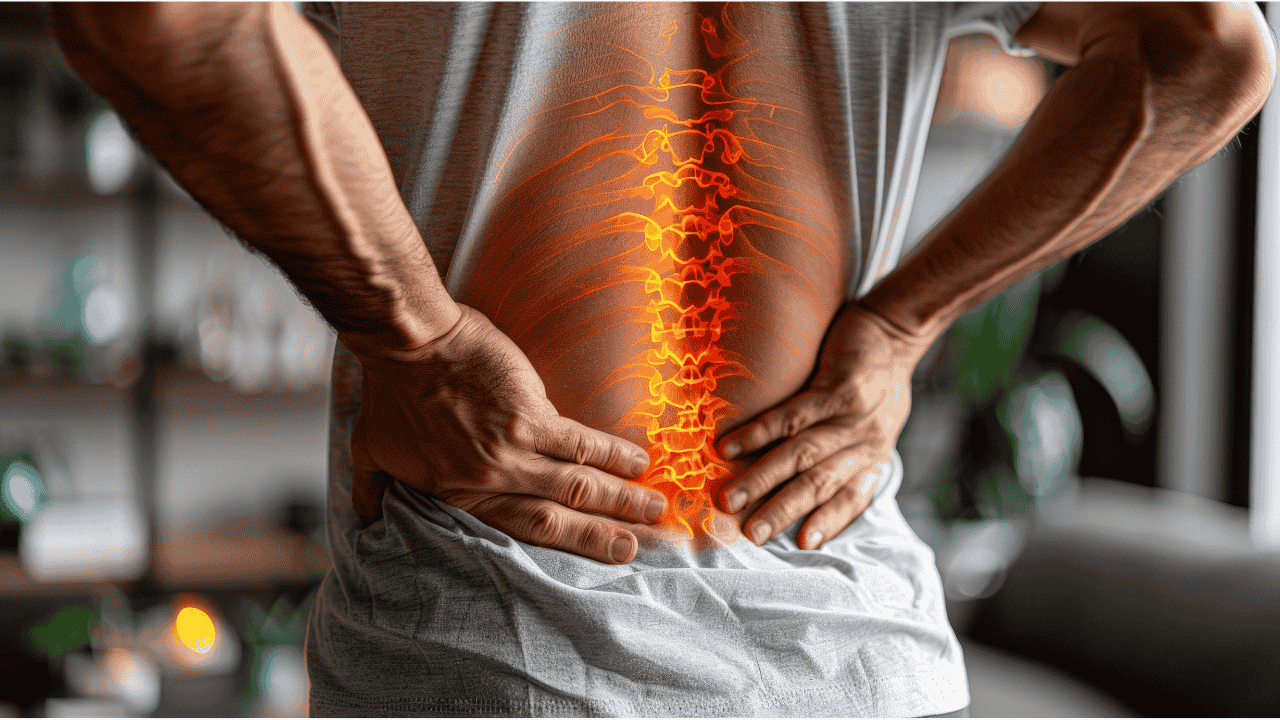
Lumbar canal stenosis occurs when degenerative changes - such as thickened ligaments, bone spurs, herniated discs, or vertebral slippage-narrow the spinal canal in the lower back, compressing spinal nerves. This can lead to symptoms like pain, numbness, cramping, or weakness in the lower back, buttocks, and legs.
Symptoms include:
Low back pain radiating to buttocks or legs
Cramping or heaviness in legs after walking (neurogenic claudication)
Numbness, tingling, or weakness—typically worse on standing/walking, improved by sitting or bending forward Diagnosis involves clinical evaluation—history, physical exam, bending tests—combined with imaging (X-ray, MRI, CT) .
Often the first-line approach, especially for mild to moderate cases without severe neurological deficits:
Physical Therapy & Therapeutic Exercise
– Focus on lumbar flexion (to enlarge canal space), core strengthening, stretching, aerobic conditioning, manual therapy, posture correction, and neural mobilization.
– Evidence shows early PT reduces the need for surgery and improves functional outcomes.
Medications & Injections
– NSAIDs, analgesics, nerve pain meds (e.g., gabapentin/pregabalin) can ease symptoms.
– Epidural steroid injections provide short- to mid-term relief for those not responding to oral meds or PT.
Lifestyle & Self‑Care
– Low-impact aerobic exercises like walking, cycling, aquatic therapy. Avoid high-impact activities.
– Weight management, postural optimization, ergonomic guidance .
Clinical Bottom Line: A stepwise conservative pathway combining PT, safe exercises, lifestyle modifications, and targeted pain relief is effective and backed by moderate evidence .
Surgical options are considered when:
Symptoms are severe or progressive (e.g., worsening weakness, bladder/bowel issues)
Conservative measures fail after several months
Significant mobility restriction or pain persists
Surgical Techniques:
Decompression surgeries:
Laminectomy: Removes lamina (back part of vertebra) to relieve pressure. Laminotomy/Foraminotomy: Targeted bone removal to enlarge the canal or nerve root exits.
Microsurgical decompression: Less invasive, highly effective with ~80% long-term success.
Fusion procedures: Applied if spinal instability exists (e.g., spondylolisthesis).
Outcomes: Surgery typically yields faster and more substantial relief compared to conservative treatment, especially in severe cases .
Accurate Assessment
— Personalized evaluation: nature and severity of stenosis, symptoms, spinal stability.
Tiered Care Strategy
— Start with conservative interventions. Escalate to injections if needed.
— Resort to minimally invasive or open decompression only when indicated.
Technology-Driven Precision
— Uses microsurgical and targeted decompression techniques to optimize outcomes, minimize tissue damage, and shorten recovery.
Rehabilitation & Prevention
— Post-procedure rehab focuses on safe return to activity and core stabilization.
— Educates patients on ergonomics and lifestyle changes to prevent recurrence.